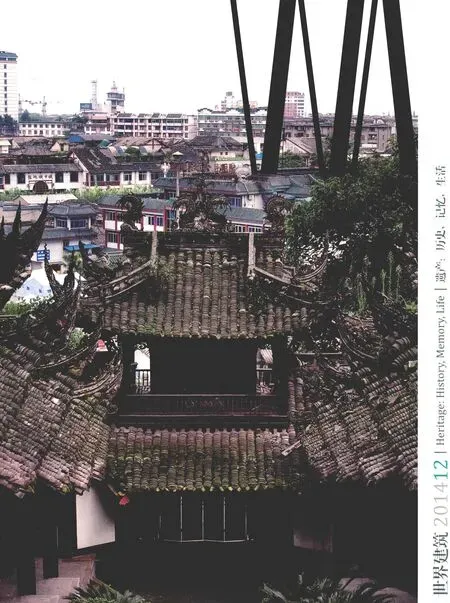篇首语
篇首语
《世界建筑》的读者朋友,
本期的《世界建筑》关注当今中国建筑的一个重要领域——历史保护。
现代中国对现代性的狂热拥抱曾经使我们主动摒弃历史:先是1960年代至1970年代的文化大革命,它留给我们的历史观影响远未像它的政治影响那样被自上而下地肃清;后是1990年代中期至今天的消费主义和大众传媒,我们曾经认为班纳姆的“没有一个城市不会从横扫一切的现代化中受益”或斯汀的“历史不会教会我们任何东西”是新文明和新解放的代表。终于,在经历近两个10年的对“新”和“更新”的不知疲倦的追求之后,我们开始意识到,文化不是在短时间内仅仅依靠勇气和激情就可以创造的,文化需要根,而我们的根恰恰存在于一度被我们忘却的历史之中。
然而,重新学会善待历史和善用历史是何等的艰难。当主流叙事把历史从简单的“坏”变回简单的“好”之后,我们在中国各地的历史保护项目中不停看到的是实现简单“好”的愿望与解决复杂“难”的现实之间的巨大反差:历史遗存的真实性与建成区域的运营效果之间的矛盾;原住民社区的传统生产生活方式与中产阶级的全球生产生活方式之间的摩擦;诚实记录差异的形态演进与强调旧世场景的风貌控制之间的对抗;等等。任何历史保护项目都会成为众说纷纭的焦点,任何历史保护项目的主持人都必须同时是勇敢和睿智的人。
所幸的是,总是会出现勇敢且睿智的人。我们在本期所收录项目的作者就是这样的人,不论他们的背景是偏重学术、工程还是管理,他们都有一个共同的特点:即对项目所处地方历史的通晓与热爱。正是这种热爱使他们更乐于把过去的记忆与今天的生活连接起来,使历史恢复其连续与鲜活的本性,虽然这往往意味着更多的争论与更大的不可预测。
我们真心希望每一位建筑师都能够对历史有类似的热爱——在今天,历史是还能够使无所畏惧的建筑师们变得稍微谦恭些的为数不多的东西之一了。毕竟,对于饱受现代性与“后现代性”漂洗的当代建筑师来说,最大的讽刺就在于,当穷毕生之功试图摆脱历史之后,你最终发现,你从未真正离开过它。
特别感谢吕舟教授,是他使本期杂志成为可能。
《世界建筑》主编(2013-)
清华大学建筑学院教授
Dear Reader,
In this issue of World Architecture, we focus on preservation projects in contemporary China.
The zealous reception of modernity in modern China used to result in voluntary separations with our own history. Firstly, there was the Cultural Revolution from the 1960s to 1970s, the historical argument of which still lingers around in China quite unlike its political argument. Secondly, there has been the consumerism and mass communication from the 1990s up to now. We genuinely believed that Banham's "There isn't a city in the world that wouldn't benefit from some ruthless modernization." and Sting's "History will teach us nothing." are omens of a new and better civilization. Finally, we come to the understanding now that no culture can be forged rapidly by sheer courage and passion. For every culture there is a root. And our root resides right in the history that we have chosen to forget.
Yet what a hard mission it is to retake history. After the mainstream narrative has turned history from "the simply bad" to "the simply good", what we see in all Chinese preservation projects is the stark contrasts between a will of "the simply good" and a reality of the consistently complicated. There are the contradictions between historical authenticity and economic viability. There are conflicts between the local life style of the aboriginal community and the global life style of the newly gentrified community. There are clashes between the honesty of recording the morphological evolution and the scenography of forging a whole scale historical appearance. And so on. Every preservation project is destined to be a focus of public controversy. Everyone who steers such a project needs to be not only intellectual, but also brave.
Fortunately, there are always brave intellectuals, like the ones that we are publishing in this issue. Whether coming from an academic, engineering or administrative background, they share one thing in common: the true love of history of the place. It is out of this love that all of them have tried to connect the memories of the past to the lives of the present in a creative way, even if this means more controversy and more unpredictability.
We do hope that every architect today would have the same love of historytoday, history is one of the few things that still can humble an arrogant architect. For one who has been repetitively washed by the beliefs of modernity (or "post-modernity"), the biggest irony would be that, after a lifetime of endeavors trying to separate from history, in the end he (she) finds out the he (she) has never truly left it.
Our special thanks to Professor LU Zhou who made this issue possible.
Editor-in-Chief (2013-), World Architecture
Professor of Architecture, School of Architecture, Tsinghua University

